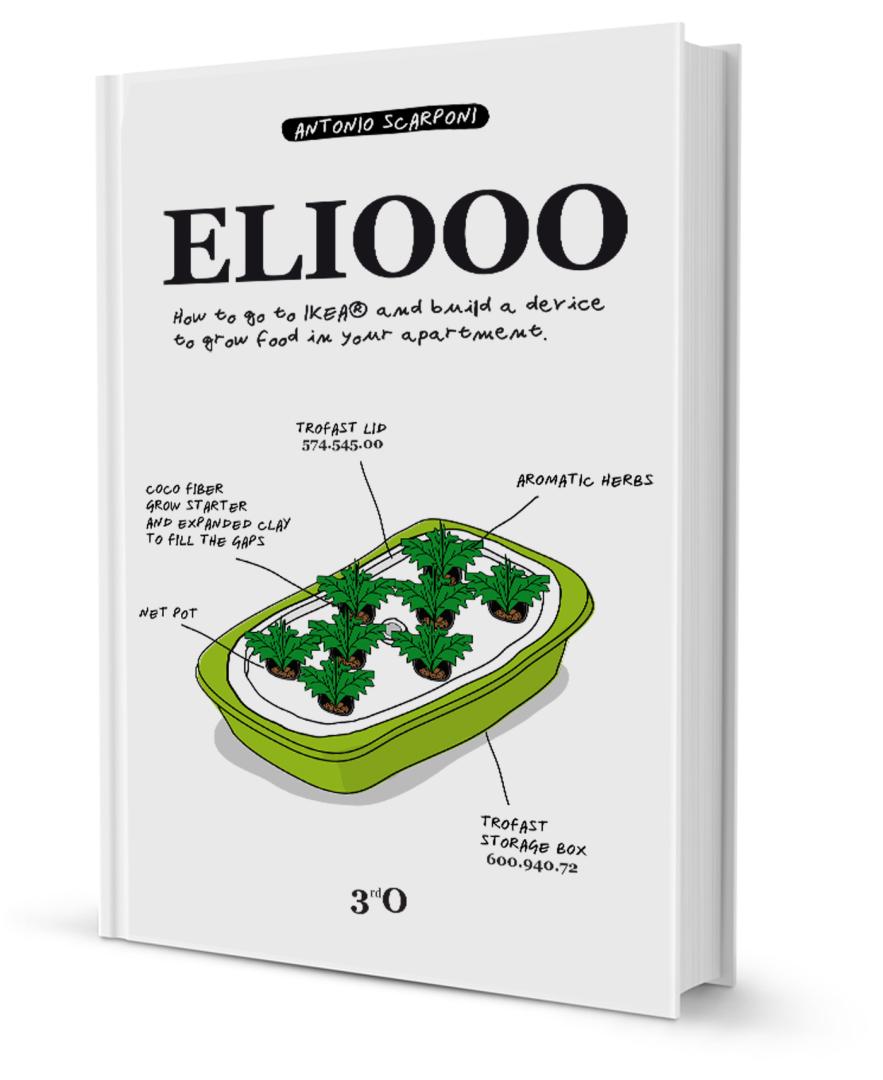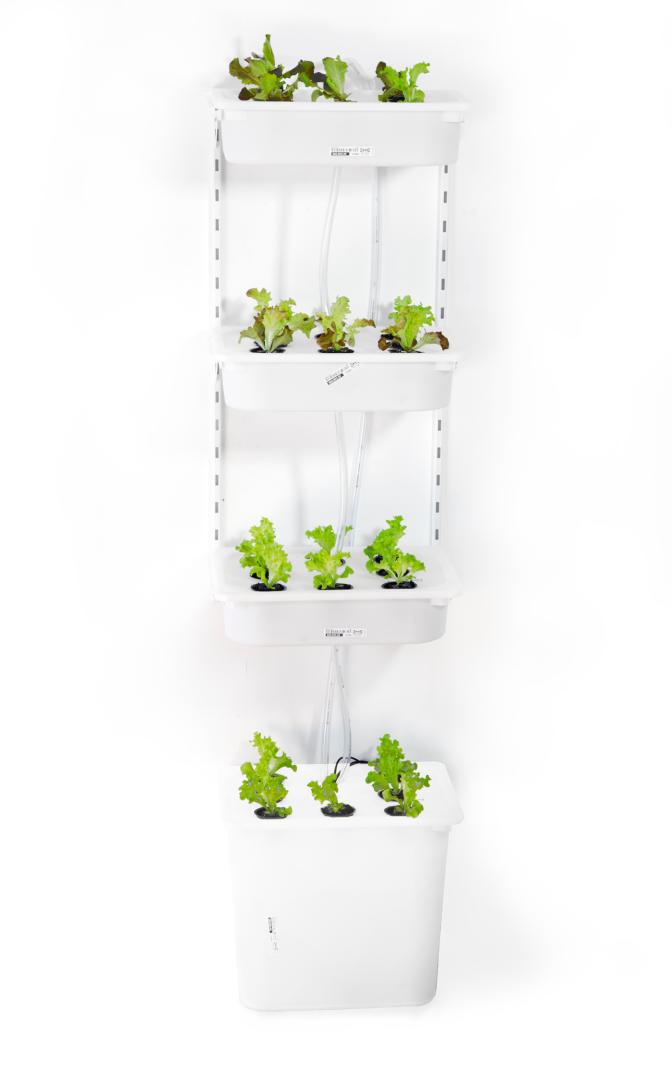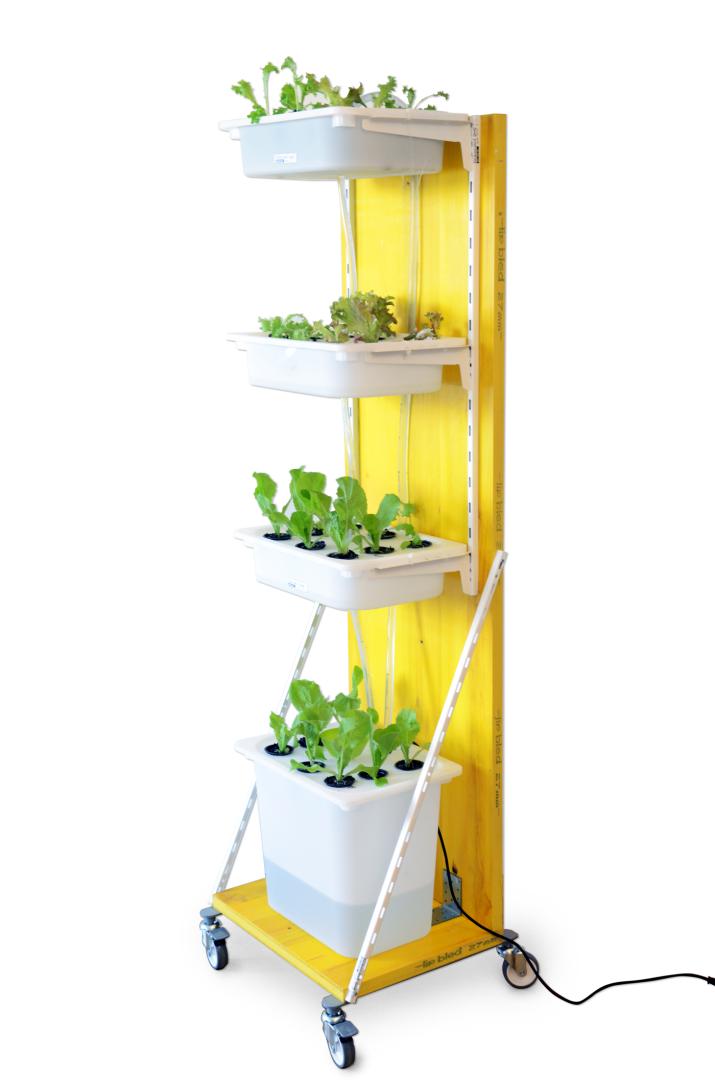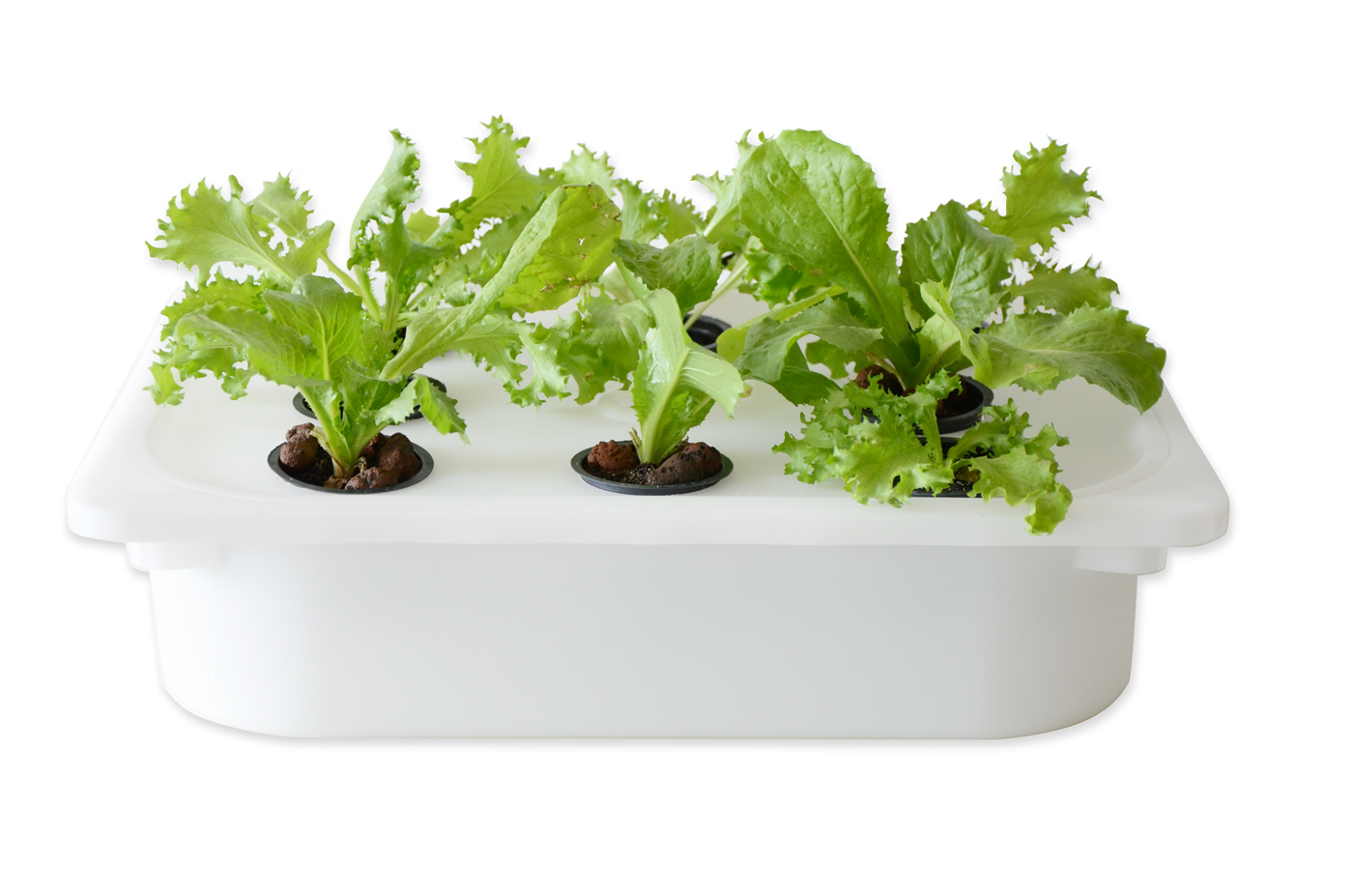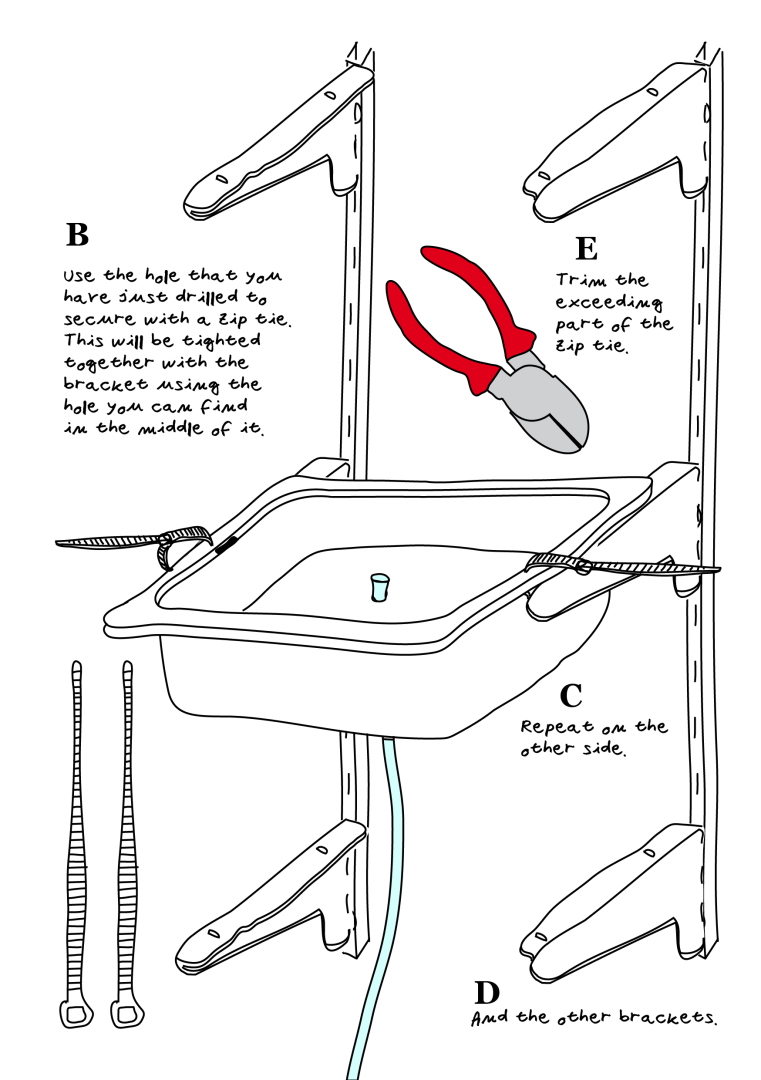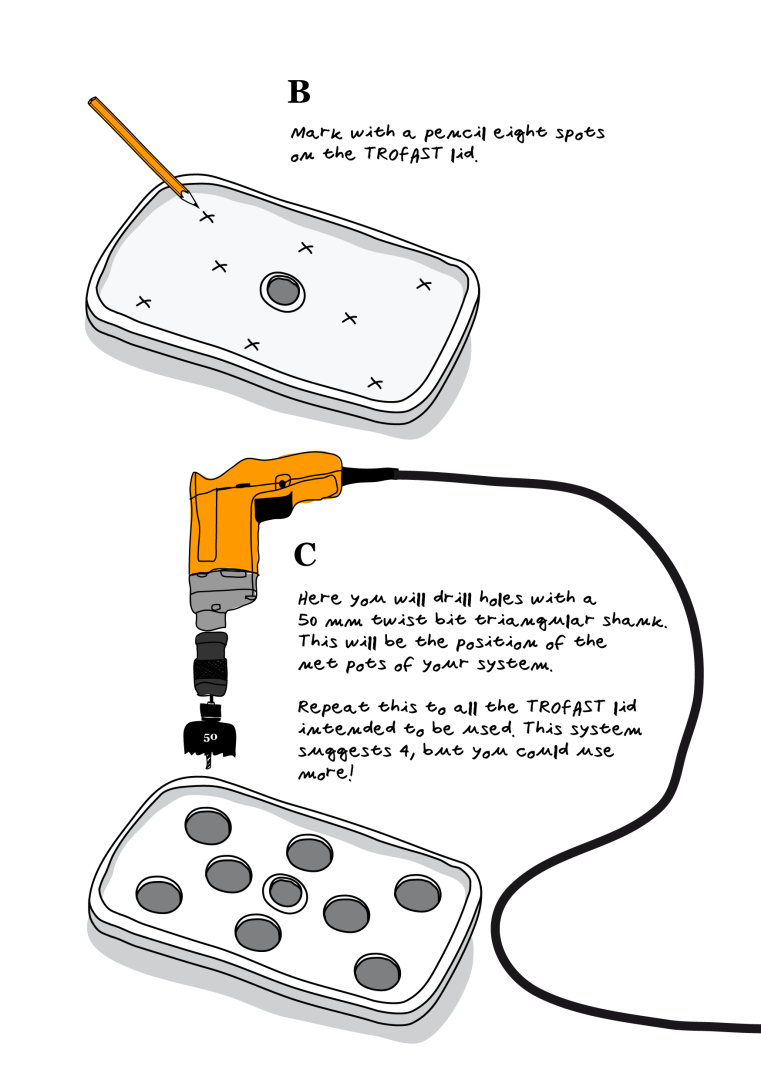ELIOOO
Basic information
Project Title
Full project title
Category
Project Description
ELIOOO aims to conceive design as a narrative that can transform what is already produced and distributed worldwide. It is an instruction manual designed to transform a widely distributed IKEA product into a hydroponic device to grow food at home using hydroponics and, in doing so, transform IKEA into a distributor of a supply of products that do not exist. And you, into a possible manufacturer of an idea.
Project Region
EU Programme or fund
Description of the project
Summary
ELIOOO is an instruction manual designed to transform a widely distributed IKEA product into a hydroponic device to grow food at home and, in doing so, transform IKEA into a distributor of a supply of products that do not exist, and the final user, into a manufacturer of an idea.
Hydroponics is a farming technique that can grow plants in water instead of soil, saving up to 90% of the water used in traditional agriculture systems, requiring much less space, and providing complete control of the nutrients needed by the plants at each stage of their growth, allowing vertical farming, grow food anywhere, including spaceships.
ELIOOO combines different hydroponics techniques adapted to make them easy to use at home. However, ELIOOO is not a book on urban farming, nor is it a general book about hydroponics. It is a manual that will show, step by step, how to build and run a simple hydroponic system with some inexpensive IKEA boxes.
The ultimate object of design is knowledge. Designers visualize quantities and dimensions, organize briefs, explain procedures, and sometimes have more to do with storytelling than technical drawings. These stories and their illustrations are traditionally given to artisans who turn them into tangible things, prototypes, mass-produced, distributed, sold, consumed, and ultimately thrown away. But as a designer, I like to design objects that anyone can make, creating a direct link between who design and who consume. This narrative can turn the world’s population into the most prominent creative industry ever known.
Rather than mindlessly producing new stuff, distributing it, and reinventing new production and distribution chains, we should find new ways of assembling what we already have. For this reason, ELIOOO is using items conveniently produced by a European multinational that promotes a European lifestyle worldwide and at European standards and empower users to transform them into something else.
Key objectives for sustainability
Urban agriculture can be a sustainable practice, but it is not recommended to expose edible greens or fruits to the city's polluted air. Microparticles are absorbed in the soil and stratified in its outmost layer, where the plants nourish themselves through their roots. Among other sustainable aspects of hydroponics, it prevents the absorption of polluting microparticles. It is recommended, however, to grow edibles greens and fruits indoors.
ELIOOO feature several hydroponic techniques that can be achieved at ease at home. These include "non circulating" hydroponics, a method developed by the University of Hawaii that does not require electricity to power water pumps oxygenate the water. Furthermore, ELIOOO explores using homoeopathic doses of urines to fertilize the plants, a practice promoted with clear guidelines by the World Health Organization.
IKEA is a Swedish multinational that promotes European lifestyle and quality standards at an affordable cost worldwide. The company produces convenient iconic pieces that are present in most European homes. This project aims at transforming their distribution infrastructure to encourage users to engage with simple hydroponic techniques, made simple, to grow food at home through some widely distributed product made of plastic but yet, certified PBA free. The book suggests, however, that the same logic could be applied to any analogue product.
ELIOOO promotes, symbolically, an idea of sustainability that engages the behaviour of its final user. It empowers her to take a simple concrete action and promote an awareness of the closed-loop between what we consume and what we excrete. Furthermore, it promotes an esthetic of resilience and an idea of design that does not produce new things but instead transforms what we already find around us. The project aims, first and foremost, at provoking the imagination and create a vision of sustainability that anyone can make at home.
Key objectives for aesthetics and quality
ELIOOO is designed to make hydroponic look simple to reach the most extensive and diverse amount of audience. For this reason, the book consists of illustrations, minimizing the texts and provide step by step all the information to assemble different hydroponics set up based on needs and wishes. Furthermore, the font used is made of the personal handwriting of the author as it is conceived as part of the illustration and symbolically establishes a "personal relationship" with the author's voice and yet create an iconic presence.
The illustration is produced with a digital vectorial program as if it would have been made analogically. This choice is related to the reproducibility of the images as they can be exported in a considerable variation of formats and can be scaled at any size and providing complete control over the image quality. This decision allows maximum flexibility of the use of the design, allowing digital print for exhibition and various other formats.
The project aims to create an aesthetic of empowerment that enhances an idea of design, independent from the materiality of the product. The book is designed to inspire and take action and make hydroponics accessible, and in doing so, create awareness of the circularity of food and products in general.
Key objectives for inclusion
The project aims to develop an aesthetic of inclusion that sees design as a form of applied interdisciplinary knowledge. A narrative that frees objects by their original function and allow them to be transformed into something else. This attitude is here taken as a metaphor for society. The project suggests an attitude towards objects that implies an idea of design as a form of knowledge that freely circulates to empower individuals towards more fair living practices by avoiding consumptions.
Initially, this project has been conceived as an experiment to find a way to "monetize" an idea of design independent from products. The project consisted of seeing a potential financial impact of a media campaign that an idea can generate. After several attempts in which projects designed generated significant attention in the media but modest if not vain economic leverage, a crowdfunding campaign has been set up to measure the willingness to buy a product that does not exist unless you make it. The successful campaign launched with IndieGoGo (2014) allowed us to reach the goal of 10k.
After that, a publishing house was founded that produces, for the time being, this title exclusively. The book is currently printed on demand and distributed via Amazon. Its simple design allowed civil society to activate at many levels, making the translation of the book into different languages possible. The publication after that has been widely used in schools and in several institutions to explain the basics of hydroponics at many levels. Besides the translation in Japanese (2015), German (2016) and Russian (2017) and two current editions in French and Italian, a simplified version for the World Food System was made to activate people in the favelas in South America.
The simplicity and affordability of the system and the resiliency of the publishing format allowed an inclusive approach that bonds knowledge to value production at the scale of the individual.
Results in relation to category
The results and the impacts of an idea of design freed from production/distribution and consumption logic have been measured at different levels:
Economic: the project has been financed by developing a crowdfunding campaign reaching 10K USD in 2014. Since then, the project generates small but constant royalties revenues through worldwide distribution platforms (Amazon, iTunes). Most gains are currently generated via workshops and mediation to engage communities in simple hydroponic installations.
Cultural: After its first-year presentation at the Milano Design Week and the Venice Architecture Biennale, 2014. The book has been presented in the Takikawa Design Challenge, 2015, followed by a Japanese edition which raised the great interest to tackle the challenge of food production in the Fukushima district: Hydroponic allows to grow food in contaminated environments.
Since then, in the past years has been presented in several design European Museums:
2018: "Storie. Il Design Italiano". Triennale Design Museum, Mialno, Italy.
2020: "Plant Fever". Centre d'Innovation et de Design au Grand-Hournu (CID), Belgium.
2021: "Planet Love. Vienna Biennale for Change 2021". Museum of Applied Arts (MAK) Vienna, Austria.
2021: "Traning for The Future". Venice Architecture Biennale, German Pavillion (as part of Jonas Staal, contribution), Italy.
2022: "Plant Fever". Museum für Gestaltung, Zurich, Switzerland.
Translations:
2014: First English Edition
2015: Japanese Edition
2016: Second English Edition
2016: German Edition
2017: Russian Edition
2018-2021: Italian and French Edition (in progress)
Public Participation:
Each exhibition follows with the public's involvement, mediations, workshops, and independent talks and workshops.
With these activities, the project aims at binding together culture, industry and lifestyle through a design proposal that operates independently from the production and distribution of things.
How Citizens benefit
The project empowers civil society in shifting the perspective on products. Culturally, the project transforms the user into a producer and a consumer at the same time. The aim is to change a view on industrial design that adopts a model similar to recipe books, providing a means to imagine a different type of relationship between people and things and activating by repurposing what is already widely distributed. The project offers a cultural impact primarily by pointing a simple action that can be taken at almost no cost for a more sustainable lifestyle which does not imply acquiring a new product.
Civic society has been involved in the project with hands-on workshops, which allowed the understanding of hydroponics and encouraged to grow food at home. Furthermore, the public has been engaged in social events (in the presence and remote) in which a pesto sauce was produced and tasted, and its recipe shared among the participants.
Another form of public involvement has been the translation in different languages, which happened voluntarily as a form of cultural activism.
Innovative character
The project enhances an idea of design that empower sustainable lifestyles independently from product consumption. It is conceived as an attitude able to transform what is already produced and distributed worldwide, allowing to see design as a source of knowledge production rather than a service. Yet, the project aims at rebonding together industry culture and society in a new way by creating aesthetics of non-consumptions.
This approach can be seen at the beginning of industrialization and the beginning of the early critiques of capitalism. An early trace can be seen in Walden by Henry David Thoreau (1854), who in this diary provides instructions on how to build a furbished hut in the forest as a form of protest towards consumerism. Another example can be seen in the excellent book by Louise Brighan in "Box Furniture", published in 1910, who provides instructions about building furniture with shipping box, designed to improve the living condition of mimers in Norway. Later, the "TuTa", a do-it-you-self unisex fashion piece intended by Thayaht for any activity and season in 1918. Or the "Red Blue" chair designed by Rietveld in 1923, or in more recent times "autoprogettazione" by Enzo Mari (1974), the theoretical discourse by Victor Papanek (Design for the Real World, 1971), to mention a few.
ELIOOO is designed as a strategic tool non only conceived to transform the purpose and nature of widely distributed products but also to use them to produce food. To achieve that and leverage the media impact, a book has been independently published. A publishing house was created to support this idea and eventually publish other similar projects in the future.

